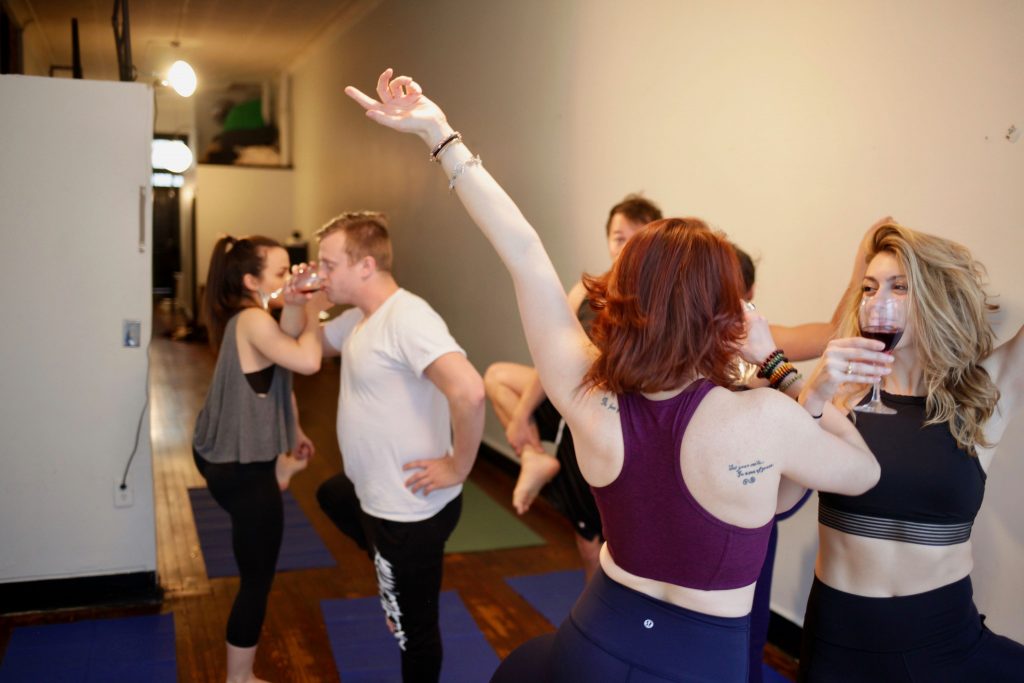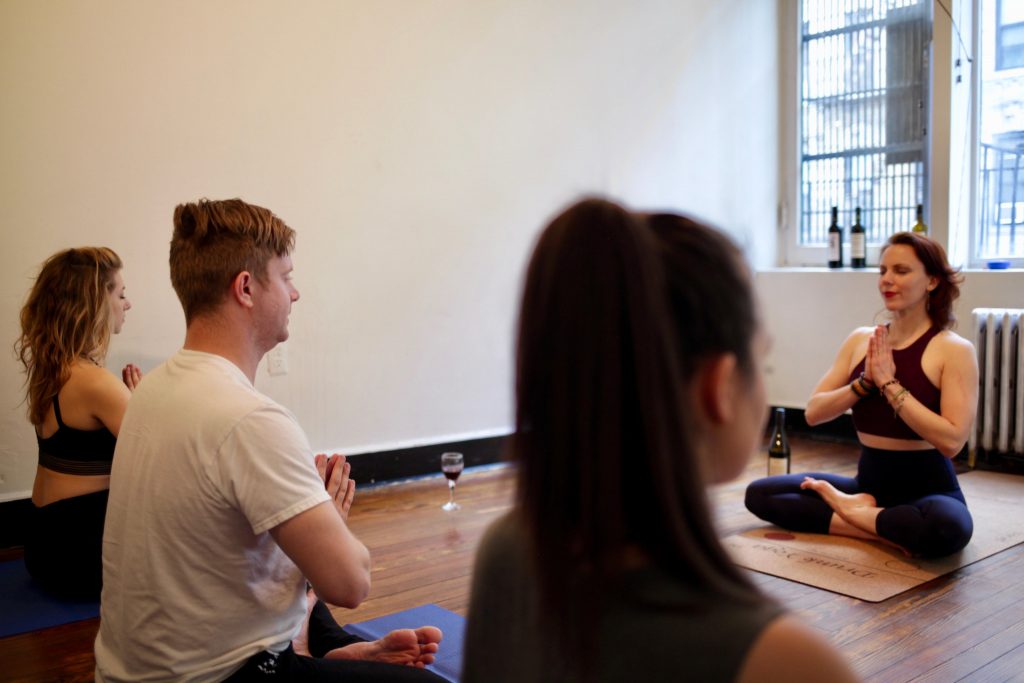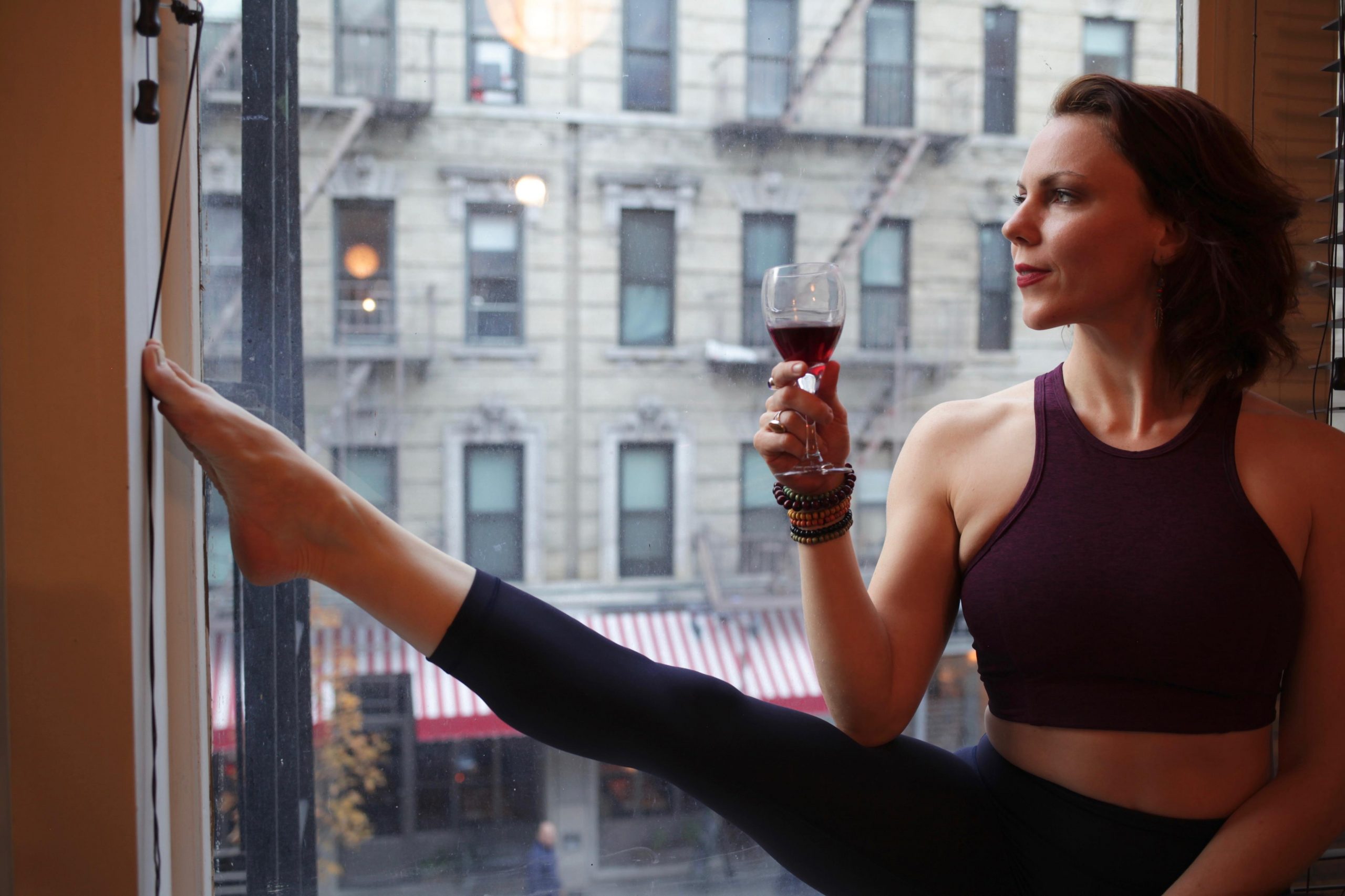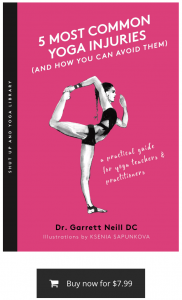There comes a point in a yoga teacher’s career when the teaching moves beyond the instruction of the poses, and into the realm of what it means to be a radiant human being.
Or, perhaps I should speak for myself.
Yoga to me is about learning to develop a relationship with one’s own body in time and space, for the purpose of cultivating personal joy.
And, when we have techniques to uplift ourselves, we can then work better to uplift each other–find levity in the communal.
I have experienced firsthand how the abuse of spiritual power can destroy one’s relationship to one’s “self,” a community, and to one’s personal yoga practice.
Scene 1:
During my first yoga teacher training in my early twenties, I spiraled into an abusive relationship with my yoga teacher. He was twice my age, a self-proclaimed yoga master, and a former Scientologist. Also, a bit of a Casanova, mind you, and toward me at the time, quite seductive. In the year I spent with him, he became more than my teacher; he was my boss, my lover, and eventually a roommate, and he was abusive mentally, emotionally, physically, sexually, and worst of all, spiritually. He threatened me to keep our relationship a secret. He brought other women he was dating into the yoga studio, introduced them to me, and kissed them in front of me, for the purpose of humiliating me. Like clockwork, I’d leave the office to cry. Later, he’d lecture me on how he was “teaching me a lesson about non-attachment.” According to him, I wasn’t “spiritually conscious” enough and too invested in the “ego.” I, of course, being the yoga student, felt pressured to believe him. So, yoga, to me, turned into a punishment. Yet another daily practice to remind me that I would never be whole—or at least would never meet the standards of perfection set by the elusive yoga elite required to achieve enlightenment.
There is an aspect of yogic tradition that promotes a student/master relationship—that there are the sage teachers, and they know what’s best for you. And you, being the student, do not. My relationship with this teacher was extreme in that I didn’t have the know-how to set boundaries, which caused the student/master dynamic to slide into a master/slave relationship.
In that year, despite the excessive vinyasas, meditation, and green juice, I grew extremely ill and fatigued because I was emotionally drained, stressed, and depressed. This yoga wasn’t working.
Eventually, space and time from this teacher granted me the perspective I needed to extract myself from his clutches, though it wasn’t easy. And for quite some time after, I had a bad taste in my mouth for all things “yoga.”
The tumultuous experience ignited such a personal awakening, in fact, that in response, I bought a one-way ticket to India, and backpacked by myself across the country for several months. After my quarter-life-existential trip of a lifetime, I flew to Thailand where (plot twist!) I fell through a roof and broke my back (…long story). Then, of course, I thought my journey with yoga was over for good.
Scene 2:
Upon my return to New York, I discovered Katonah Yoga, created by Nevine Michaan, which not only helped me to heal from my back injury but was a philosophical game-changer. Through her restorative Hatha practice, beautifully interwoven with Taoist theory and sacred geometry, she taught me that the universe has no personal investment in my happiness. (Gasp!) The universe will continue to run by its own laws, regardless of my feelings about them.
The universe does not care if I am happy or healthy—only I do.
And because I am the only being personally invested in the quality of my life, it is up to me to hone techniques to achieve my own sense of joy, working with the laws of nature—not in spite of them.

Infatuated with my newfound practice, I once again immersed myself in the New York yoga scene. I was trying my best to navigate a path forward, with only a loose grip on my own sense of identity, all while trying to “keep up with the Joneses.” (…And by Joneses, I mean everyone who teaches and practices yoga in Manhattan.)
Although I was happy to be practicing and teaching yoga once again, as I began to work at high-end studios and gyms, I struggled to enjoy teaching as I watched my students glued to their iPhones, carrying enormous amounts of energetic baggage. Still today, many of my students and clients cling to their stress and misery, unconsciously addicted to the overworked hamster wheel of Manhattan, burning in their desire for achievement until they burn out completely.
Scene 3:
Despite being fully equipped with Lululemon pants and a respectable Instagram following, I began to feel nauseated by the dogmatic principles of purist yogis that I found to be hypocritical. In this world, an excessive amount of gossip and criticism spewed from the mouths of those preaching non-judgment and non-reactivity. (Listen, nobody is perfect. But, if you’re in a position of power within a spiritual community, you better make sure the sun actually shines out of your ass if you make it a habit to criticize others for doing things you don’t agree with.)
Friendly reminder: just because you don’t like something someone is doing, it doesn’t mean that it’s necessarily “wrong,” it just means that it makes you uncomfortable.
I think a large part of this delusion certainly has to do with social media and the perverse need to post, “like,” and be “liked” by the masses.
*For the few of you fortunate enough to have the luxury of avoiding Instagram, here’s the scoop: There is an extremely competitive component to being a yoga teacher on social media. In order to be taken seriously as a professional instructor, a yoga teacher is expected to maintain thousands of followers.
All of this is to say, the New York “yoga club” felt to me a lot like High School: where skinny, beautiful women harnessing an obscene amount of Instagram followers smile at me down their noses but never let me sit with them at the lunch table.
Scene 4:
I had no intention of making such a splash with Drunk Yoga. At least, not at the idea’s conception. One night a few months ago, while I was out at the bar Grey Lady, I was catching up with one of the owners, and I told him that I’m a yoga teacher now. He said, “I need yoga, I can’t touch my toes.” Then, he immediately proceeded to touch his toes. “Oh,” he said, surprised. “I guess I can touch my toes when I’m drunk.” (Cue lightbulb moment.) With excitement, I blurted, “Let’s do Drunk Yoga! I’ll teach a class in the bar’s back room for beginners. It’ll be fun.” He loved the idea and responded, “Sure! What should we call it? ‘Tipsy Yoga’?” I said, definitively, as if the Gods above had just granted me permission from the Drunk Yoga heavens, “No. I’ll call it ‘Drunk Yoga.’”
To my dismay, the first few classes were empty. I planned to scrap the idea, as I had a yoga retreat in Bali to plan for, and I needed to be in front of an audience. But, in one last-ditch effort to pull in a crowd, I reached out to my friend who used to write for Gothamist. I dragged her to a class, and she kindly wrote a great article about it.
As soon as her piece published, the world exploded. Or at least, my world did.

News outlet after news outlet across the globe wrote about the story. “Eli Walker’s Drunk Yoga class is the latest trend in NYC…” they said—some in a more positive light than others. Fans of the class were ecstatic, and Grey Lady and I had to whip up a website and an online reservation system to handle the influx of inquiries as Drunk Yoga went viral overnight. Nay-sayers weren’t so pleased. However, they were equally as passionate about reaching out to share their views on my new idea, chastising me for bastardizing a “sacred practice.”
But the ignorant, hateful reactions I witnessed as a result of the polarizing name “Drunk Yoga” didn’t bother me. What did bother me was the hostility I encountered from fellow yoga teachers. My teachers.
One teacher, in particular, was livid, and accused me of “teaching people how to drink.”
Let’s pause so I can take a moment to set the record straight: I’m bringing yoga to bars, not wine to yoga studios. I am not “teaching people to drink.” People already know how to do that. I’m teaching people who already drink wine how to do yoga. (And people are allowed to do both.)
Of course, I understand her initial concern for the obvious risks involved in offering alcohol to yoga practitioners. Still, it alarms me that these figureheads in the spiritual community allow themselves to be so triggered by a concept that may threaten what they know, as they preach to their followers to do the opposite.
Their feedback forced me to deeply consider my intentions for this Drunk Yoga venture. And it was then that I realized, for me to say “no” to this opportunity that was tugging at my heartstrings simply because it made my teacher uncomfortable, was not an option. I couldn’t live with myself if I’d made this impactful life decision out of fear rather than trust.
What’s more is that through all of this controversy, I realized I had touched on something much greater than our culture’s love for mixing alcohol with…everything.I realized there is a societal thirst for a breaking away from what has become an exclusive yoga elite, reserved for the wealthy, flexible, “holier-than-thou” die-hard practitioners who’ve taken a practice that teaches non-judgment and non-reactivity and used these very tenets to polish their own spiritual egos.
So, in a way, Drunk Yoga is a response to this superficial hypocrisy. Truthfully, my soul is smirking. I’m happy that I’m bringing awareness to it, however inadvertently.
Indeed, I’m glad that my work has hit a nerve with the “purists,” so that we can dare to deconstruct what yoga means once again in regards to practicing compassion and humility.
I have always had a knack for teaching yoga to non-yogis in unconventional settings (Divine Your Story for kids in Harlem Public Schools and Columbia University, Pranayama for Scuba Divers in Thailand, and Yoga for Actors at Actors Connection), so Drunk Yoga isn’t a stretch for me. I knew in my heart of hearts this would be a great way for me to bring a practice of self-love to a community of bar-goers who wouldn’t otherwise try yoga.
Drunk Yoga is not about “getting drunk.” It’s about indulging in something new and subversive because, um, hi, we’re human, and it’s healthy to have a little (okay a LOT) of fun. It’s about untangling the perfectionist syndrome and the walls we’ve worked so hard to build around an egocentric facade that screams to the world through gritted teeth, “I KNOW EXACTLY WHAT I AM DOING AND I AM INCREDIBLY HAPPY ALL OF THE TIME!”
…When, the truth is, none of us know why we’re here, we’ve got no clue what we’re doing, and we don’t know when this life will end. I’m not quite sure who decided that we’re supposed to have all the answers, even in yoga.
Drunk Yoga is for individuals who need the uplifting of community because depression and feelings of isolation in this city run rampant. But, it’s uncool to be sad (let’s blame Instagram again), so many suffer alone. And for those people, I want to create a communal container in which they can feel welcome to laugh, meet new people, have a glass of wine, and learn a few things about moving their bodies on a yoga mat sans pressure to be perfect.
Through my work, my mission is to advocate for joy cultivated through celebration of aliveness and mindful movement. All are welcome here.

*For more about Drunk Yoga, check out www.dodrunkyoga.com. And keep your eyes peeled for Eli’s new book, “Drunk Yoga: 50 Wine & Yoga Poses to Lift Your Spirit(s)” soon to be published in November of 2018.



